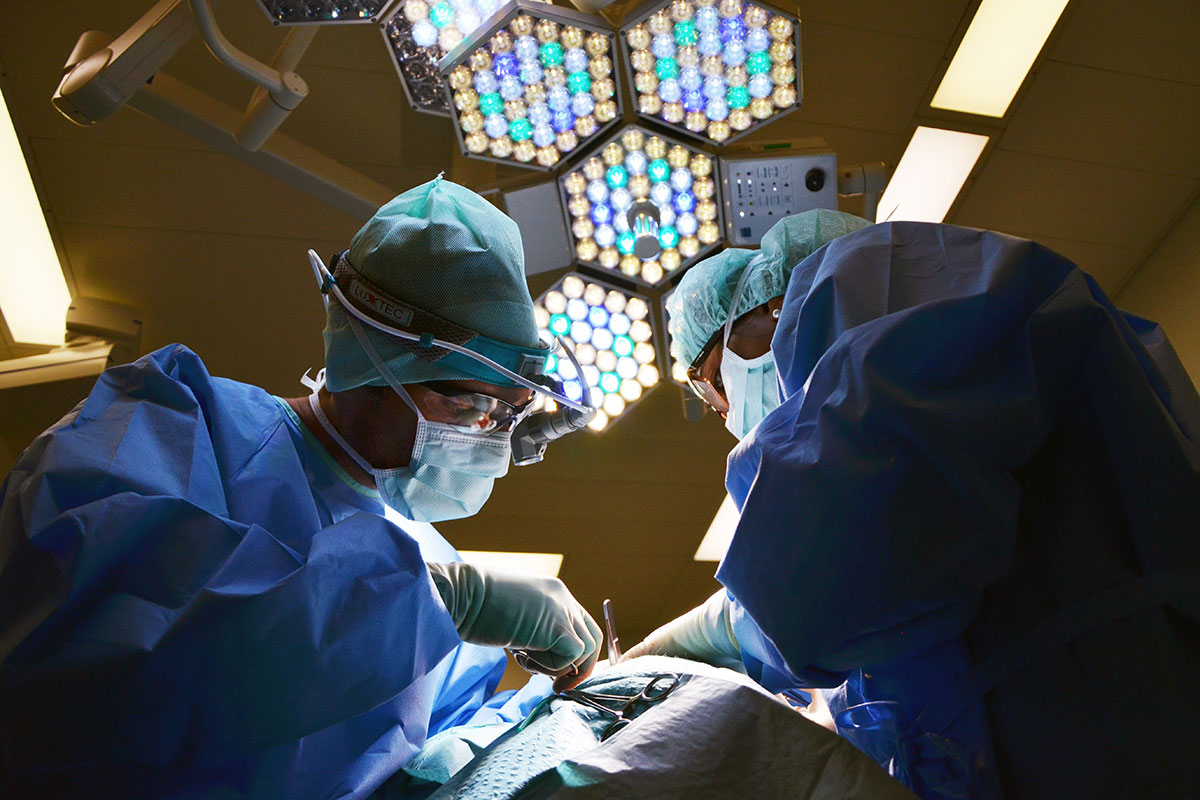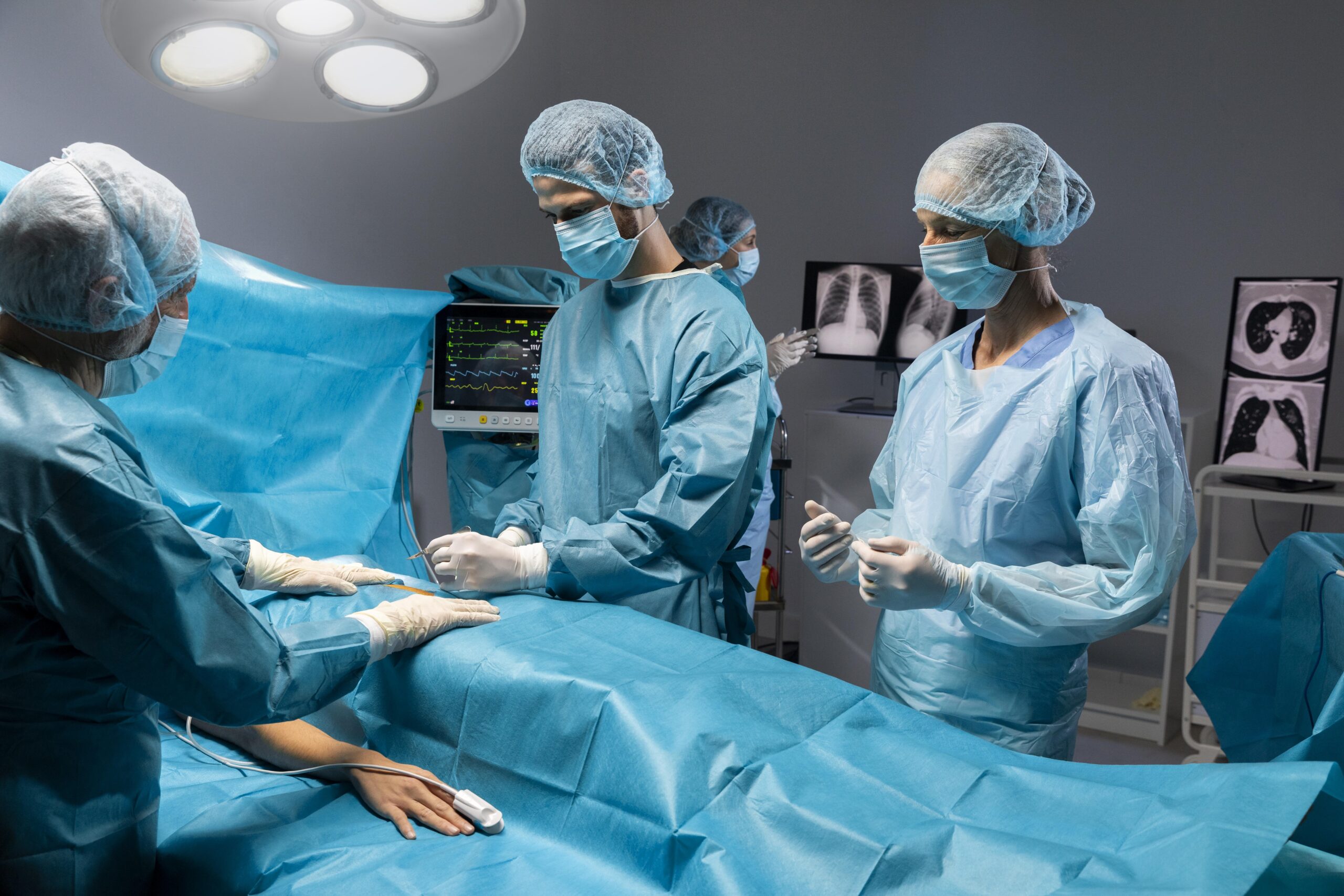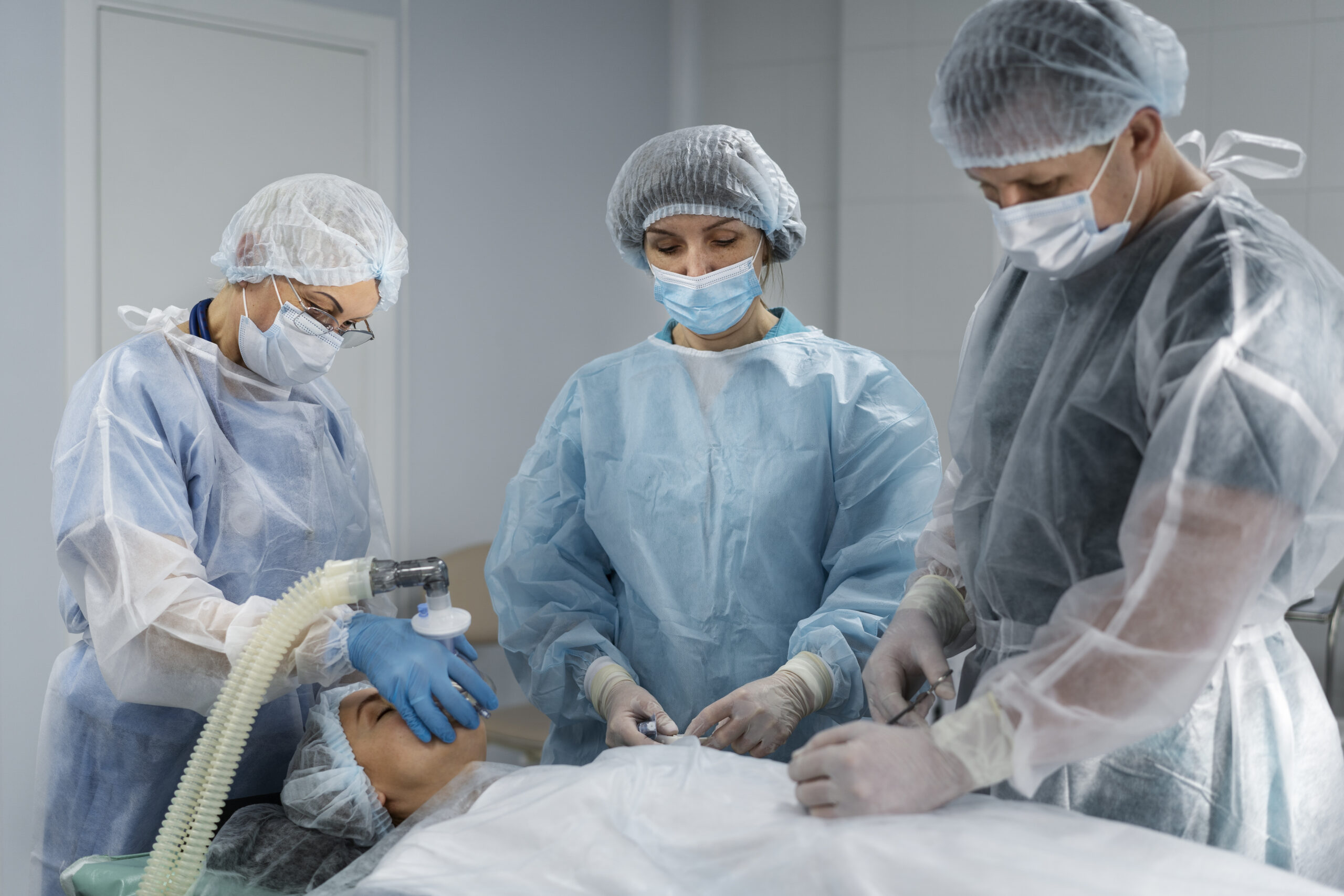Follow us :

General Surgery

Find The Best Doctor You Need
Tristique, itaque irure magnis curabitur.


General Surgery
General surgery is a medical specialty that deals with the diagnosis and surgical treatment of diseases affecting various parts of the body. Despite the name, “general” surgeons are highly trained specialists and often handle complex procedures.

Abdominal organs

Digestive tract

Skin and soft tissue

Endocrine organs

Trauma and emergency surgery

Breast surgery

Vascular access
00
YEARS
OF EXPERIENCE
We specialise in a range of surgical procedures, including:
1. Abdominal surgery:
“Abdominal surgery” refers to any surgical procedure involving the abdomen, which is the part of the body between the chest and the pelvis. These surgeries can range from minimally invasive (laparoscopic) to open procedures and may involve organs such as the:

Stomach

Intestines

Liver

Gallbladder

Pancreas

Uterus & ovaries

Spleen

Appendix

Kidneys

Bladder

Common Types of Abdominal Surgery:
- Appendectomy– Removal of the appendix.
- Cholecystectomy– Removal of the gallbladder.
- Hernia repair– Fixing abdominal wall hernias.
- Colectomy– Removal of part or all of the colon.
- Gastric bypass or sleeve gastrectomy– For weight loss (bariatric surgery).
- Exploratory laparotomy– To find the cause of abdominal pain or bleeding.
- Hysterectomy– Removal of the uterus (in women, done through the abdomen in some cases).
Purpose:
- Treat or diagnose diseases
- Remove damaged or diseased tissue
- Relieve obstructions or bleeding
- Repair trauma or injuries
Recovery:
- Depends on the type of surgery (laparoscopic often heals faster than open surgery)
- Includes pain management, wound care, diet adjustment, and activity restrictions

2. Breast surgery:
“Breast surgery” is a broad term that refers to any surgical procedure performed on the breasts. These surgeries can be done for cosmetic, reconstructive, or medical reasons. Here’s an overview of the main types:

Breast Augmentation

Breast Augmentation

Breast Lift(Mastopexy)

Breast Reduction
Cosmetic Breast Surgery
- Breast Augmentation: Enhances breast size using implants (saline or silicone) or fat transfer.
- Breast Lift (Mastopexy): Lifts and reshapes sagging breasts.
- Breast Reduction: Reduces the size and weight of large breasts for relief from physical discomfort or aesthetic preference.
Reconstructive Breast Surgery
- Post-Mastectomy Reconstruction: Rebuilds the breast after cancer-related removal, using implants or the patient’s own tissue (flap procedures).
- Correction of Congenital Deformities: Addresses conditions like tuberous breasts or asymmetry.
Medical or Preventative Surgery
- Mastectomy: Removal of one or both breasts, often due to breast cancer.
- Lumpectomy: Removal of a tumor and a small margin of surrounding tissue.
- Prophylactic Mastectomy: Preventative removal for those at high genetic risk (e.g., BRCA mutation).
Gender-Affirming Surgery
- Top Surgery for Trans Men: Removal of breast tissue to create a masculine chest.
- Breast Augmentation for Trans Women: Implants or fat grafting to create a feminine chest.
3. Colorectal Surgery:
Involves surgical procedures on the colon, rectum, and anus. It’s used to treat a range of conditions, from cancer to chronic diseases and structural issues. Types of Colorectal Surgeries:

Colectomy

Proctectomy

Colostomy or Ileostomy

Low Anterior Resection (LAR)

Abdominoperineal Resection (APR)

Types of Colorectal Surgeries:
- Colectomy– Removal of part or all of the colon.
- Partial Colectomy (Hemicolectomy): Only the affected portion is removed.
- Total Colectomy: The entire colon is removed.
- Proctectomy– Removal of the rectum.
- Colostomy or Ileostomy– Opening (stoma) created in the abdomen for waste to exit the body when normal bowel movement isn’t possible.
- Low Anterior Resection (LAR)– Removes cancer or diseased tissue from the rectum while preserving bowel function.
- Abdominoperineal Resection (APR)– Removes the anus, rectum, and sigmoid colon (often requires a permanent colostomy).
Minimally Invasive Options:
- Laparoscopic Surgery
- Robotic-assisted Surgery
- These offer quicker recovery, less pain, and smaller scars.
Risks & Recovery:
- Risks: Bleeding, infection, leakage at surgical site, bowel dysfunction.
- Recovery: Can vary from days (minimally invasive) to weeks/months (major open surgeries).
- Lifestyle adjustments may be needed, especially after ostomy procedures.
Common Reasons for Colorectal Surgery
A. Colorectal Cancer:
- Removal of cancerous sections of the colon or rectum.
- May include nearby lymph nodes or tissues.
Diverticulitis:
- In severe or recurrent cases, inflamed or infected portions of the colon are removed.
Inflammatory Bowel Disease (IBD):
- Includes Crohn’s disease and ulcerative colitis.
- Surgery may involve resection (removal of diseased bowel) or, in ulcerative colitis, a full colectomy.
Bowel Obstruction:
- Blocked intestine requiring removal or bypass of the obstructed part.
Colon Polyps:
- Large or potentially precancerous polyps that can’t be removed via colonoscopy.
Hemorrhoids, Anal Fissures, or Fistulas:
- Surgery may be done when less invasive treatments fail.
Rectal Prolapse:
- Surgery restores the normal position of the rectum.
4. Endocrine surgery:

Endocrine surgery: refers to surgical procedures involving the endocrine glands, which produce hormones that regulate critical body functions. These surgeries are usually done to remove abnormal, overactive, or cancerous glands.
Main Types of Endocrine Surgery–

Thyroid Surgery (Thyroidectomy)

Parathyroid Surgery (Parathyroidectomy)

Adrenal Surgery (Adrenalectomy)

4. Pancreatic Endocrine Surgery
Main Types of Endocrine Surgery:
- Thyroid Surgery (Thyroidectomy):
- Removes part or all of the thyroid gland (located in the neck).
Reasons:
– Thyroid cancer
– Goiter (enlarged thyroid)
– Hyperthyroidism (e.g., Graves’ disease)
– Suspicious thyroid nodules
2. Parathyroid Surgery (Parathyroidectomy)
- Removes one or more of the parathyroid glands, which control calcium levels.
- Reasons:
- Hyperparathyroidism: Often caused by a benign tumor (adenoma) leading to high calcium levels.
3. Adrenal Surgery (Adrenalectomy):
- Removal of one or both adrenal glands (on top of the kidneys).
- Reasons:
- Adrenal tumors (benign or malignant)
- Pheochromocytoma (tumor causing high blood pressure)
- Cushing’s syndrome (overproduction of cortisol)
- Conn’s syndrome (overproduction of aldosterone)
4. Pancreatic Endocrine Surgery:
- Sometimes done to remove neuroendocrine tumors in the pancreas (e.g., insulinomas, gastrinomas).
- This overlaps with general or gastrointestinal surgery.
- Surgical Approaches
- Minimally Invasive (Laparoscopic or Robotic): Common for adrenal and some thyroid/parathyroid surgeries.
- Open Surgery: Used for large tumors, cancer, or complex anatomy.
- Neck Exploration: Often used for parathyroid or thyroid gland surgery.
- Risks & Considerations:
- Risks:
- Bleeding, infection
- Damage to nearby structures (e.g., vocal cords in thyroid surgery)
- Hormonal imbalances (may require lifelong hormone replacement)
- Recovery:
- Most procedures have a relatively quick recovery (1–2 weeks).
- Hormone levels may need monitoring post-op, with possible lifelong medication (e.g., thyroid hormone after thyroidectomy).
5. Vascular surgery:
Vascular surgery focuses on the diagnosis and surgical treatment of diseases involving the blood vessels — arteries, veins, and lymphatic systems — excluding those in the heart and brain.
Main Types of Vascular Surgeries–

Open Surgery

Endovascular Surgery (Minimally Invasive)

Hybrid Procedures

Common Conditions Treated by Vascular Surgeons
- Peripheral Artery Disease (PAD):
- Narrowing or blockage of arteries, typically in the legs.
- Can cause pain, ulcers, or limb-threatening ischemia.
2. Aneurysms:
- Abdominal Aortic Aneurysm (AAA) or Thoracic Aortic Aneurysm: Dangerous bulging in the aorta that can rupture.
3. Carotid Artery Disease
- Narrowing of the arteries in the neck that supply the brain, increasing the risk of stroke.
4. Deep Vein Thrombosis (DVT) and Pulmonary Embolism (PE):
- Blood clots in deep veins; PE is life-threatening if the clot travels to the lungs.
5. Varicose Veins and Chronic Venous Insufficiency:
- Poor blood return from legs, leading to swelling, skin changes, and ulcers.
6. Dialysis Access Surgery:
- Creating arteriovenous (AV) fistulas or grafts for long-term hemodialysis.
7. Lymphedema:
- Rarely treated surgically but may involve vascular reconstruction or lymphatic bypass in select cases.
Types of Vascular Surgeries
- Open Surgery:
- Involves large incisions to directly repair or bypass blood vessels.
- Examples:
- Aortic aneurysm repair
- Bypass grafting (e.g., femoral-popliteal bypass)
- Endovascular Surgery (Minimally Invasive):
- Uses small incisions and catheters to place stents or balloons inside vessels.
- Examples:
- Angioplasty and stenting
- Endovascular Aneurysm Repair (EVAR)
- Hybrid Procedures:
- Combine open and endovascular techniques, useful in complex vascular diseases.
Risks & Recovery:
- Risks: Bleeding, infection, stroke (in carotid surgery), graft failure, embolism, anesthesia-related complications.
- Recovery:
- Varies by procedure: Endovascular = days; Open = weeks.
- Lifelong management may include blood thinners, lifestyle changes, and follow-up imaging.

At Kiran Health Care Center, we believe that every patient deserves not only the best treatment but also the highest standard of personalized care. With a commitment to clinical excellence, modern technology, and a compassionate approach, we stand at the forefront of community health and wellness.
our address
Copyright © 2025 KHCC. All rights reserved.






